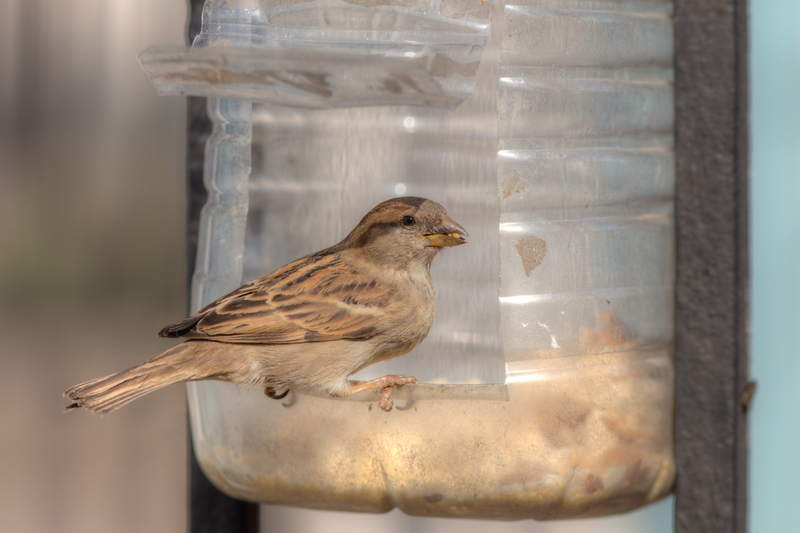The Elegance of Less: Decluttering and Minimalism
In a world filled with endless distractions and material possessions, the elegance of less emerges as a beacon of clarity and serenity. Embracing decluttering and minimalism is not just a passing trend--it's a transformative lifestyle choice. This comprehensive article explores the philosophy, practical benefits, and actionable tips for achieving simplicity through decluttering and adopting a minimalistic mindset. Discover how less can indeed mean more!
Understanding the Essence of Minimalism
Before diving into the practical aspects, it's important to grasp what minimalism truly means. At its core, minimalism is about intentional living. It's the art of focusing on what truly matters by eliminating excess in all forms, from physical belongings to unnecessary commitments.
What Is Decluttering?
Decluttering involves consciously removing items and obligations from your life that do not serve a meaningful purpose. Whether it's your home, workspace, or digital space, decluttering paves the way to a more peaceful existence. The process is not merely about tidying up, but about creating an environment that supports your well-being.

The Benefits of Decluttering and Minimalism
Adopting a minimalist lifestyle and prioritizing decluttering offers a wide range of benefits that extend beyond just having a tidy home. Let's explore the remarkable advantages:
- Mental Clarity: A clutter-free space promotes calmness and reduces stress, giving your mind room to breathe and focus.
- Increased Productivity: When distractions are minimized, it's easier to concentrate on tasks that truly matter.
- Financial Savings: By buying less, you save money and make more thoughtful purchases.
- Environmental Impact: Consuming less means reducing your ecological footprint and contributing to a more sustainable world.
- Enhanced Relationships: Focusing on experiences rather than possessions often strengthens bonds with loved ones.
Scientific Evidence Supporting Minimalist Living
Numerous studies have found a direct link between a clutter-free environment and improved mental health. The brain is constantly scanning our environments, and excess clutter acts as a permanent visual distraction that increases cognitive overload and stress. By embracing minimalism and cutting out non-essentials, we are able to experience more focused and peaceful daily lives.
Decluttering and Minimalism: A Step-by-Step Guide
Now that we recognize the profound benefits, how can you start your journey into the elegance of less? Let's break it down step by step:
1. Identify Your Why
Before beginning any major change, reflect on your motivations. Why do you want to declutter? Are you seeking freedom from stress, more time for family, or improved creativity? Knowing your purpose keeps you determined throughout the process.
2. Start Small
Minimalism is a journey, not a race. Start with one area, such as a single drawer or your wardrobe, and gradually work your way through your space. Each small victory builds momentum. Here are a few easy entry points:
- Clothes: Donate or sell items you haven't worn in the last year.
- Kitchen: Remove unnecessary gadgets and duplicates.
- Workspace: Digitize documents and organize supplies.
- Digital: Unsubscribe from unused email lists and delete redundant files.
3. Use Proven Decluttering Techniques
A variety of methods can help guide your decluttering process. Some popular techniques include:
- The KonMari Method: Popularized by Marie Kondo, this approach encourages keeping only those items that "spark joy."
- The Four-Box Method: Label four boxes as Keep, Donate, Sell, and Trash. Sort every item you own into one of these categories.
- One-In, One-Out Rule: For every new item you bring into your home, let go of another.
4. Rethink Daily Habits and Purchases
Minimalism is also about cultivating mindful habits--choosing consciously, buying only what is necessary, and focusing on quality over quantity.
- Ask yourself if you really need a new item before purchasing it.
- Opt for multi-purpose and high-quality products.
- Develop routines for regular tidying and reassessment.
5. Create Minimalist Spaces
Designing your environment to support your minimalist aspirations is crucial. This doesn't mean bare, empty rooms. Instead, strive for well-chosen furnishings, soothing colors, and an emphasis on open spaces. A few tips:
- Favor furniture with clean lines and neutral palettes.
- Embrace natural light and visible open spaces.
- Display only a few meaningful decor pieces.
- Keep surfaces clear of unnecessary items.
Decluttering Beyond the Home: Minimalism as a Life Philosophy
Minimalism isn't just about your living room or closet. It's a holistic approach that can apply to all areas of life. Consider these dimensions:
- Digital Minimalism: Moderating screen time, limiting social media, and curating the kind of content you expose yourself to can significantly improve your focus and peace of mind.
- Relationships: Prioritize meaningful connections. Invest your time and energy in people who uplift you.
- Time Management: Declutter your schedule by saying no to unimportant commitments and focusing on what aligns with your values.
- Work: Streamline work processes and prioritize essential tasks for greater productivity and job satisfaction.
The Role of Mindfulness in Minimalism
At the heart of decluttering and minimalism lies mindfulness. Being present helps you make intentional choices, savoring what you own and the experiences you have. Practicing mindfulness enables you to spot excess before it accumulates.
Overcoming Challenges in the Pursuit of Simplicity
While the rewards are compelling, the journey to minimalism can come with obstacles:
- Emotional Attachments: Letting go of items connected to memories can be tough. Consider keeping a select few that are truly significant.
- Consumer Culture: Resist the urge to keep up with ever-changing trends. Focus on what aligns with your values.
- Family and Roommates: Communicate the benefits and encourage those you live with to join you on your minimalistic journey.
Common Minimalism Myths Debunked
There are many misconceptions about the minimalist lifestyle. Let's clear up a few:
- Myth 1 - Minimalism Equals Bare Walls: Minimalism is about owning what adds value, not depriving yourself of comfort or beauty.
- Myth 2 - Only for Singles or Young People: Minimalism enhances lives regardless of age or family situation.
- Myth 3 - A One-Time Project: Rather than a quick fix, minimalism is a sustainable, ongoing practice.
Minimalism and Decluttering Trends in 2024
The global shift towards minimalist living has accelerated in recent years. As remote work and smaller living spaces become the norm, people are investing more in intentional living. Trending themes in decluttering and minimalism this year include:
- Eco-Minimalism: Focusing on environmentally responsible choices and reducing waste.
- Digital Detox: Taking regular technology breaks to minimize digital clutter.
- Minimalist Design: Adopting clean lines and open, airy aesthetics in home and office environments.
Stories of Transformation: The Power of Less
Many individuals and families have shared how embracing the elegance of less has led to remarkable life changes. From improved mental health and closer relationships to discovering forgotten passions, the impact of minimalism and decluttering is profound. The key is to personalize your approach--minimalism looks different for everyone.
Frequently Asked Questions About Minimalist Living
As more people explore decluttering and minimalism, questions emerge. Here are some insightful answers:
-
Q: How do I maintain a decluttered space?
A: Make decluttering a regular habit--monthly or seasonal check-ins help ensure your space remains intentional and serene. -
Q: Can I be minimalist with children?
A: Absolutely! Focus on quality toys, teach the value of sharing and donating, and create organized spaces for play. -
Q: What if my partner or family is not interested?
A: Lead by example, and focus on your own belongings. Over time, others may notice the benefits and become interested themselves.

Minimalism Resources and Inspiration
For further reading and inspiration on embracing the elegance of less, consider these resources:
- Books: "The Life-Changing Magic of Tidying Up" by Marie Kondo, "Essentialism" by Greg McKeown, and "Goodbye, Things" by Fumio Sasaki.
- Documentaries: "Minimalism: A Documentary About the Important Things" explores the power of simple living through real-life experiences.
- Websites & Blogs: The Minimalists, Becoming Minimalist, and Zen Habits offer ongoing tips and community support.
Embracing the Journey: The Elegance of Less
The pursuit of simplicity is a liberating adventure. By embracing decluttering and minimalism, you return to what matters most--peace, purpose, and joy. Every step, no matter how small, brings you closer to a life of clarity and fulfillment.
Conclusion: Begin Your Minimalist Journey Today
In summary, the elegance of less is an attainable and deeply rewarding path. By making mindful choices, letting go of the unnecessary, and prioritizing meaning over quantity, you can unlock greater well-being, productivity, and happiness. Minimalism is not about restriction--it's about freedom.
Start small, stay intentional, and savor the beauty of a life less cluttered. With every item you release and every commitment you reconsider, you step into a world where less truly becomes more.